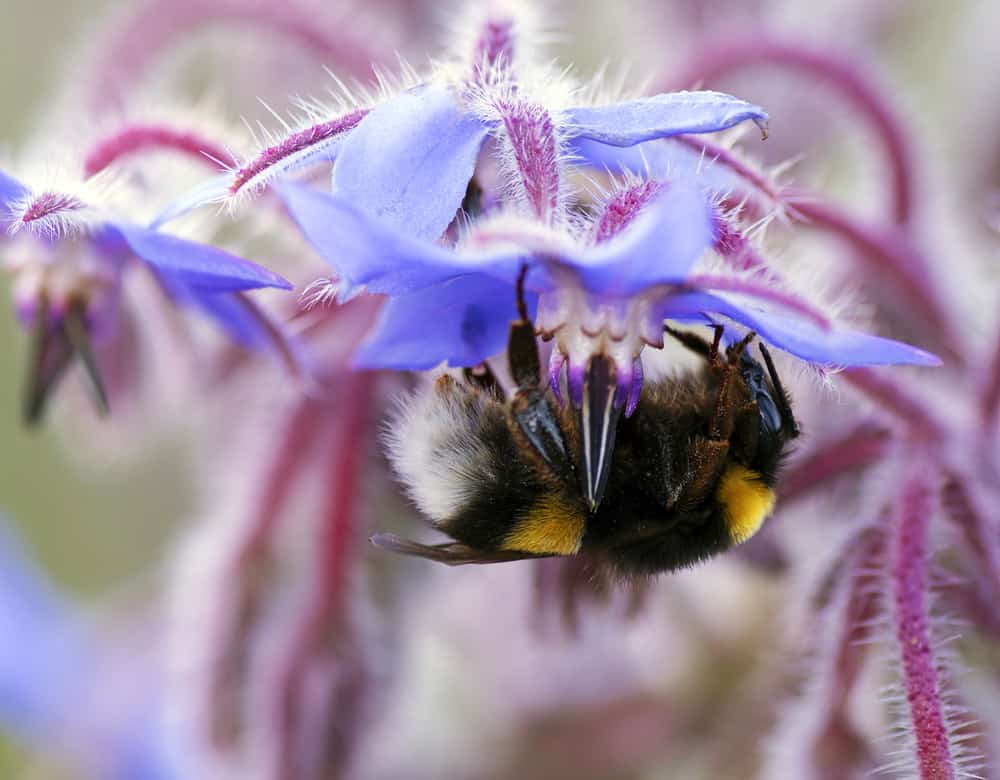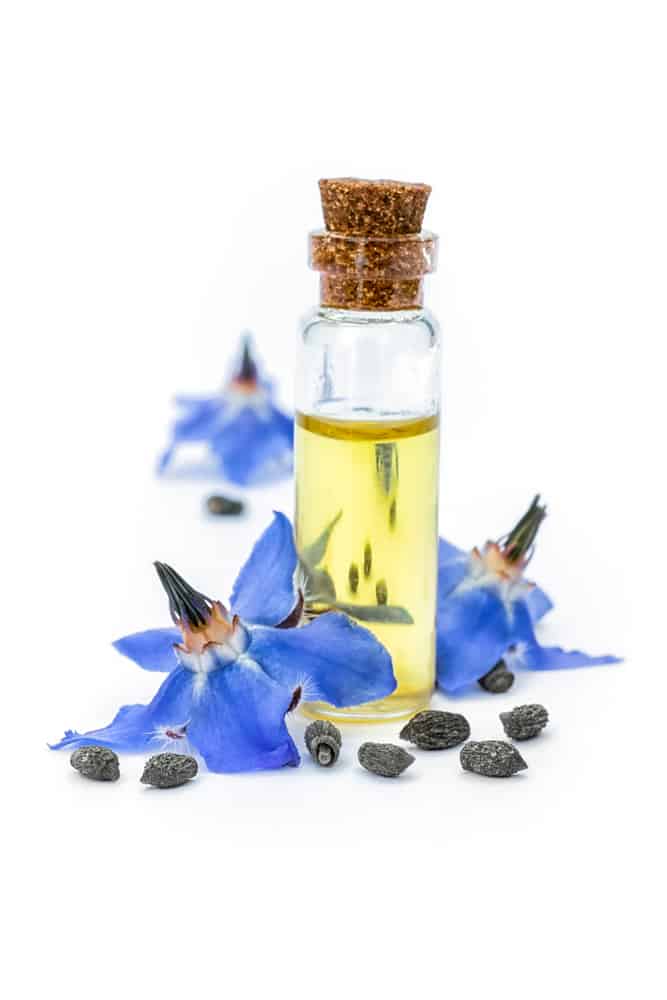Borage (Borago officinalis) is a herbaceous annual plant in the flowering plant family Boraginaceae.
Native to Syria, borage is now found throughout the Mediterranean region and has been introduced to many other areas of the world. It grows to a height of 60-100 cm (2-3 ft) and has bristly hair all over its stem, leaves, and fruits.
The blue or purple flowers are star-shaped with five petals and have a cucumber-like taste. Borage is also known as “starflower” because of the shape of its blooms.

The plant is grown commercially for the oil extracted from its seeds, which is used in cosmetics and medicine. However, borage is also grown as an ornamental plant and beekeepers often grow it specifically for bees. Here’s why borage is so important for bees.
Bees and Borage Flowers
Bees are attracted to borage flowers because of their high nectar content. A single borage flower can produce 15-20% nectar, which makes it a very valuable source of food for bees.
In addition to nectar, bees also collect pollen from borage flowers. Pollen is an important source of protein for bees and helps them to raise their young. Borage flowers are an important source of food for bees during the spring when few other flowers are in bloom.

Bees aren’t the only creatures that benefit from borage flowers. The flowers are also visited by butterflies, hoverflies, and moths. In fact, borage is sometimes called “bee bread” because it’s so important as a food source for bees.
The Relationship Between Humans and Borage
Humans have been using borage for centuries. The Egyptians used it as a antibiotic ointment and Roman soldiers rubbed it on their skin to reduce inflammation prior to battle.
Today, borage oil is used in cosmetics and medicine. The leaves can be eaten cooked or raw and are often added to salads or used as a garnish. Young leaves have a cucumber-like taste while older leaves can be quite bitter. Borage flowers can also be candied or added to drinks such as Pimms or champagne.

In recent years, there has been an increased interest in growing plants specifically for pollinators such as bees. This is because commercial beekeepers often transport bees long distances to pollinate crops such as almonds or apples. This transport can be stressful for bees and can lead to the spread of diseases such as American Foulbrood Disease (AFD).
By growing plants such as borage that provide food for bees throughout the year, beekeepers can help reduce stress levels in bees and minimize the spread of disease.
Conclusion
Bees play a vital role in our ecosystem by pollinating plants that provide us with food, but they are also under threat from humans activities such as pesticide use and habitat loss. One way we can help bees is by planting bee-friendly plants such as borage (Borago officinalis).
Growing borage is not only good for bees. The leaves and flowers of the plant can also be used by humans in salads, ointments, beverages, and more.
